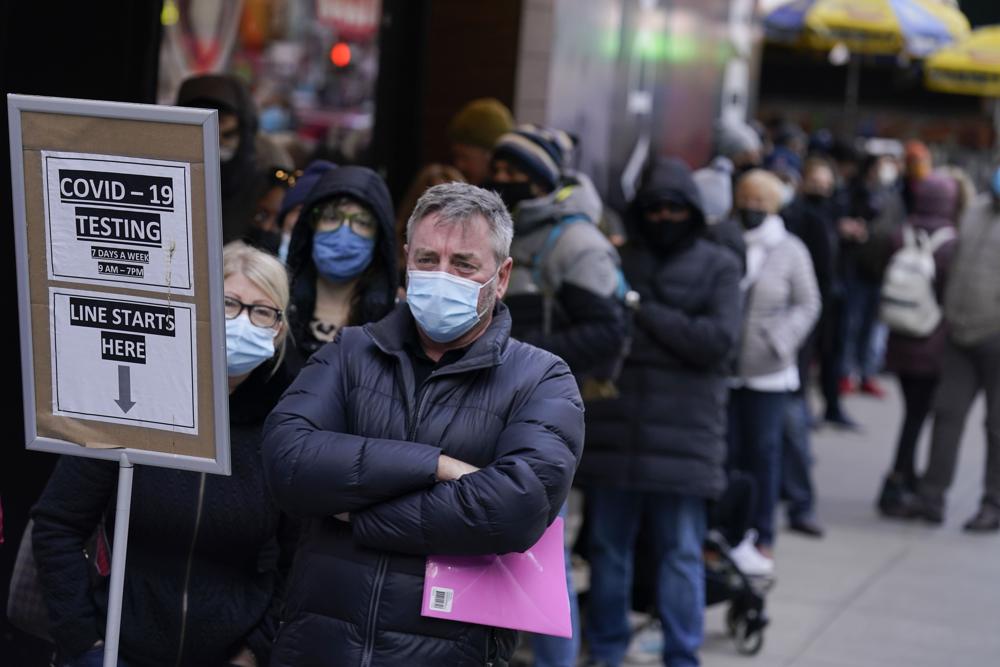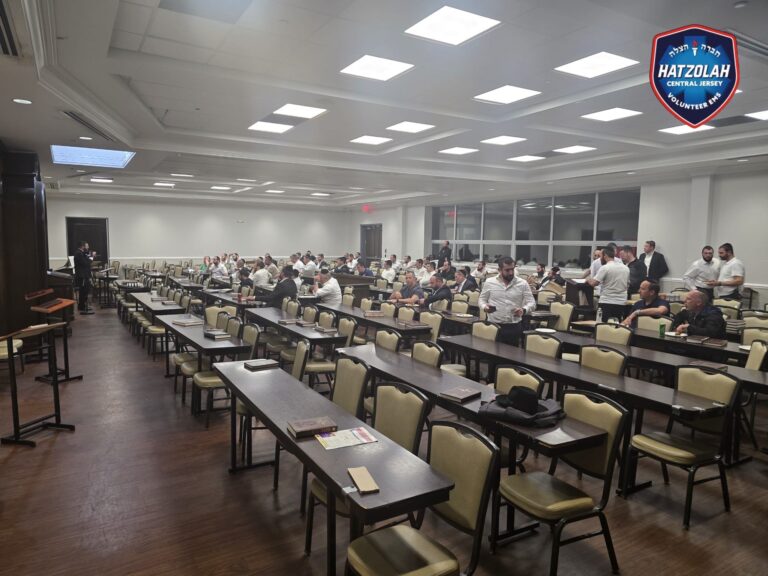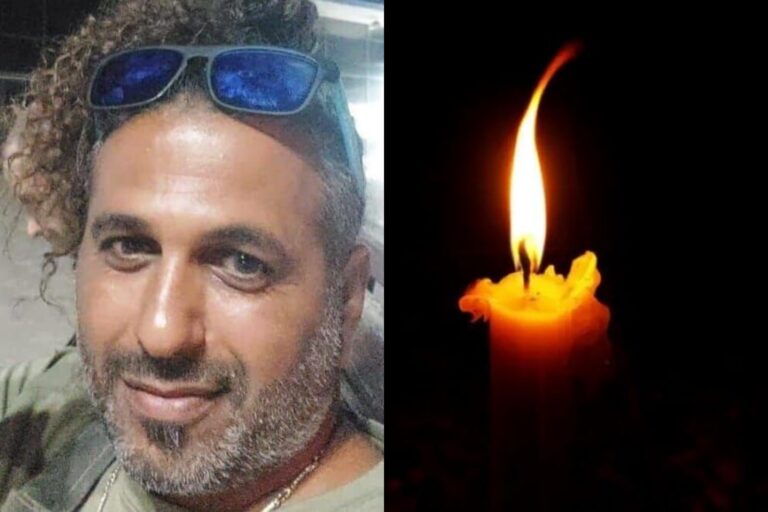Pandemics do eventually end, even if omicron is complicating the question of when this one will. But it won’t be like flipping a light switch: The world will have to learn to coexist with a virus that’s not going away.
The ultra-contagious omicron mutant is pushing cases to all-time highs and causing chaos as an exhausted world struggles, again, to stem the spread. But this time, we’re not starting from scratch.
Vaccines offer strong protection from serious illness, even if they don’t always prevent a mild infection. Omicron doesn’t appear to be as deadly as some earlier variants. And those who survive it will have some refreshed protection against other forms of the virus that still are circulating — and maybe the next mutant to emerge, too.
The newest variant is a warning about what will continue to happen “unless we really get serious about the endgame,” said Dr. Albert Ko, an infectious disease specialist at the Yale School of Public Health.
“Certainly COVID will be with us forever,” Ko added. “We’re never going to be able to eradicate or eliminate COVID, so we have to identify our goals.”
At some point, the World Health Organization will determine when enough countries have tamped down their COVID-19 cases sufficiently — or at least, hospitalizations and deaths — to declare the pandemic officially over. Exactly what that threshold will be isn’t clear.
Even when that happens, some parts of the world still will struggle — especially low-income countries that lack enough vaccines or treatments — while others more easily transition to what scientists call an “endemic” state.
They’re fuzzy distinctions, said infectious disease expert Stephen Kissler of the Harvard T.H. Chan School of Public Health. He defines the endemic period as reaching “some sort of acceptable steady state” to deal with COVID-19.
The omicron crisis shows we’re not there yet but “I do think we will reach a point where SARS-CoV-2 is endemic much like flu is endemic,” he said.
For comparison, COVID-19 has killed more than 800,000 Americans in two years while flu typically kills between 12,000 and 52,000 a year.
Exactly how much continuing COVID-19 illness and death the world will put up with is largely a social question, not a scientific one.
“We’re not going to get to a point where it’s 2019 again,” said Dr. Amesh Adalja, a senior scholar at the Johns Hopkins Center for Health Security. “We’ve got to get people to think about risk tolerance.”
Dr. Anthony Fauci, the top U.S. infectious disease expert, is looking ahead to controlling the virus in a way “that does not disrupt society, that does not disrupt the economy.”
Already the U.S. is sending signals that it’s on the road to whatever will become the new normal. The Biden administration says there are enough tools — vaccine boosters, new treatments and masking — to handle even the omicron threat without the shutdowns of the pandemic’s earlier days. And the Centers for Disease Control and Prevention just reduced to five days the time that people with COVID-19 must stay in isolation so they don’t sicken others, saying it’s become clear they’re most contagious early on.
India offers a glimpse of what it’s like to get to a stable level of COVID-19. Until recently, daily reported cases had remained below 10,000 for six months but only after a cost in lives “too traumatic to calculate” caused by the earlier delta variant, said Dr. T. Jacob John, former chief of virology at Christian Medical College in southern India.
Omicron now is fueling a rise in cases again, and the country in January will roll out vaccine boosters for frontline workers. But John said other endemic diseases, such as flu and measles, periodically cause outbreaks and the coronavirus will continue to flare up every so often even after omicron passes through.
Omicron is so hugely mutated that it is slipping past some of the protection of vaccinations or prior infection. But Dr. William Moss of Johns Hopkins Bloomberg School of Public Health expects “this virus will kind of max out” in its ability to make such big evolutionary jumps. “I don’t see this as kind of an endless cycle of new variants.”
One possible future many experts see: In the post-pandemic period, the virus causes colds for some and more serious illness for others, depending on their overall health, vaccine status and prior infections. Mutations will continue and might eventually require boosters every so often that are updated to better match new variants.
But human immune systems will continue to get better at recognizing and fighting back. Immunologist Ali Ellebedy at Washington University at St. Louis finds hope in the body’s amazing ability to remember germs it’s seen before and create multi-layer defenses.
Memory B cells are one of those layers, cells that live for years in the bone marrow, ready to swing into action and produce more antibodies when needed. But first those memory cells get trained in immune system boot camps called germinal centers, learning to do more than just make copies of their original antibodies.
In a new study, Ellebedy’s team found Pfizer vaccinations rev up “T helper cells” that act as the drill sergeant in those training camps, driving production of more diverse and stronger antibodies that may work even if the virus changes again.
Ellebedy said baseline population immunity has improved so much that even as breakthrough infections inevitably continue, there will be a drop in severe illnesses, hospitalizations and deaths — regardless of the next variant.
“We are not the same population that we were in December of 2019,” he said. “It’s different ground now.”
Think of a wildfire tearing through a forest after a drought, he said. That was 2020. Now, even with omicron, “it’s not completely dry land,” but wet enough “that made the fire harder to spread.”
He foresees a day when someone gets a coronavirus infection, stays home two to three days “and then you move on. That hopefully will be the endgame.”
(AP)












6 Responses
And again, no mention of thise who recovered from COVID and have natural immunity. Why are we considerd unvaccinated?
When will the pandemic end? (Multiple Choice)
A. When 20 boosters will be the norm.
B. When people will learn to mask up forever.
C. When everyone will have to show a “Special Common Pass” anywhere they go beyond a half mile.
D. When the Govt has your entire vaccine status and personal history in their data bases.
E. When there will be a civil or international war and Fauci and all ABC organizations will be eliminated.
becauseisaidso, article mentions “vaccinated or prior infected”. Looks like within a month, almost everyone will have either vaccine or infection, so we will then see whether repeating infection still wreaks havoc or not.
Remember, current level is when half of population is not only vaccinated and careful about it. As the number of casualties decrease, people will move more, so slowing down in casualties will be not immediate. Note, that US has number of cases comparable or less than European countries, but somehow 2-3 times more people are dying.
On target
The honest answer to your question is:
When klal yisroel-myself included-wake themselves up to FACE REALITY and accept Hashems direct wake up calls for serious Teshuva and Achdus together as one loving nation together on all levels from frum to frei to chassidish etc….
Do we actually think Hashem the king of kings ruler of the world is stupid and that we can fool Hashem as if we don’t get his direct tragic wake up message for serious Teshuva
for those on fire about covid vaccines and boosters, flu vaccine picture is very similar:
200 mln people in US do flu “boosters” every year.
Flu vaccine has usually 40% effectiveness against hospitalization, possibly higher for elderly and nursing homes.
Flu has several strains that mutate year to year.
There are now several mRNA candidates from moderna/pfizer and several others for a flu vaccine with the promise of a better match to vaccine to the current mutations.
I also found reglaim l’davar why some call vaccine “therapeutics”. Moderna’s original plan was to develop therapeutics using mRNA delivery. Currently, they are focusing more on vaccines. So, someone read that sentence and short-ciruit their mind. Interesting way ideas get into some sick minds and then propagate around the world.
yungermanS
So true. Thanks for posting.